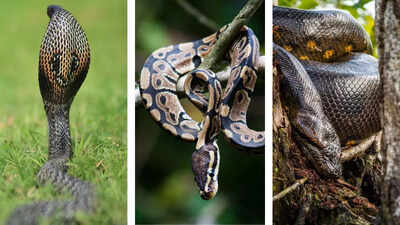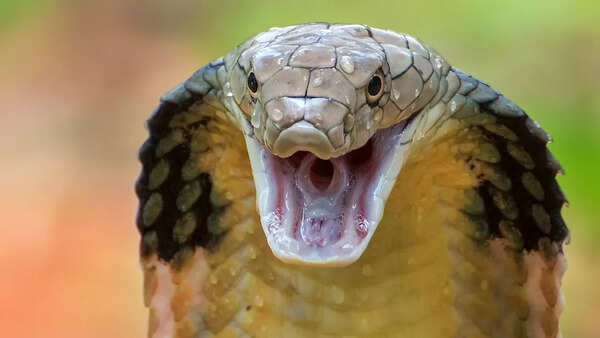ARTICLE AD BOX

When it comes to snakes, few are as fascinating– or feared– as the king cobra, python, and anaconda. Each of these reptiles is powerful in its own way and rules its territory using different skills.
But if we compare them directly, which one is the most dangerous?Let’s take a closer look at what makes each of them unique, from their size and strength to how they hunt and protect themselves.Size and strengthThe anaconda is the largest among the three in both length and weight. While a king cobra can grow up to 18 feet, anacondas can go beyond 20 feet and sometimes even reach 30 feet, according to a report by Britannica. They’re also much heavier, weighing several hundred pounds, while a king cobra usually weighs just around 15 pounds.Pythons, especially types like the reticulated python, can also grow longer than king cobras and are much heavier because of their strong, muscular bodies. In comparison, the king cobra is long but slim.Hunting techniques: Venom vs strength

All three snakes are top predators, but they hunt in very different ways.The king cobra uses venom to kill its prey. Just one bite can release enough toxin to kill a large animal. It strikes quickly and often lifts its head to eye level before biting.
Pythons and anacondas don’t use venom. Instead, they kill by wrapping around their prey and squeezing until it can’t breathe. Between the two, the anaconda is especially strong in water and often surprises its prey with a powerful attack.Speed and movement: Agility vs powerIn terms of speed, both the king cobra and anaconda can move at about 5 mph on land. However, the anaconda is much faster in water, reaching speeds up to 10 mph, according to online sources.
King cobras are quick on land and can also climb well, especially in forest areas. Pythons can climb, too, but the larger ones usually stay on the ground.Defence: Intimidation or stealth?

The king cobra is known for its hood, which it spreads to scare away threats. It raises its head, flares its hood, and hisses as a warning before attacking.Anacondas, on the other hand, depend more on their size and ability to stay hidden. Their dark, patterned skin helps them blend into swampy areas, making them hard to spot.
Their massive size also helps keep most predators away.Lifespan and habitat: Different territories, different lifespansKing cobras are mostly found in Asian forests and can live up to 20 years, according to a BBC report. Pythons live in similar areas but are also commonly kept as pets in many places. Some python species can live up to 30 years. Anacondas are native to South America and prefer swampy, wetland areas. They also live long lives, though their lifespan depends on the species.

In a nutshell, all three snakes are powerful predators in their own right– whether it’s the king cobra’s lethal venom, the python’s crushing strength, or the anaconda’s unmatched size and stealth. But in a direct face-off, the anaconda’s sheer physical power would likely give it the edge.That said, these reptiles are more than just symbols of fear. Each plays a vital role in maintaining balance within their ecosystems. Understanding their unique traits not only highlights their survival skills but also reminds us of the diverse ways nature adapts and thrives.



.png)
.png)
.png)
















 21 hours ago
3
21 hours ago
3









 English (US) ·
English (US) ·